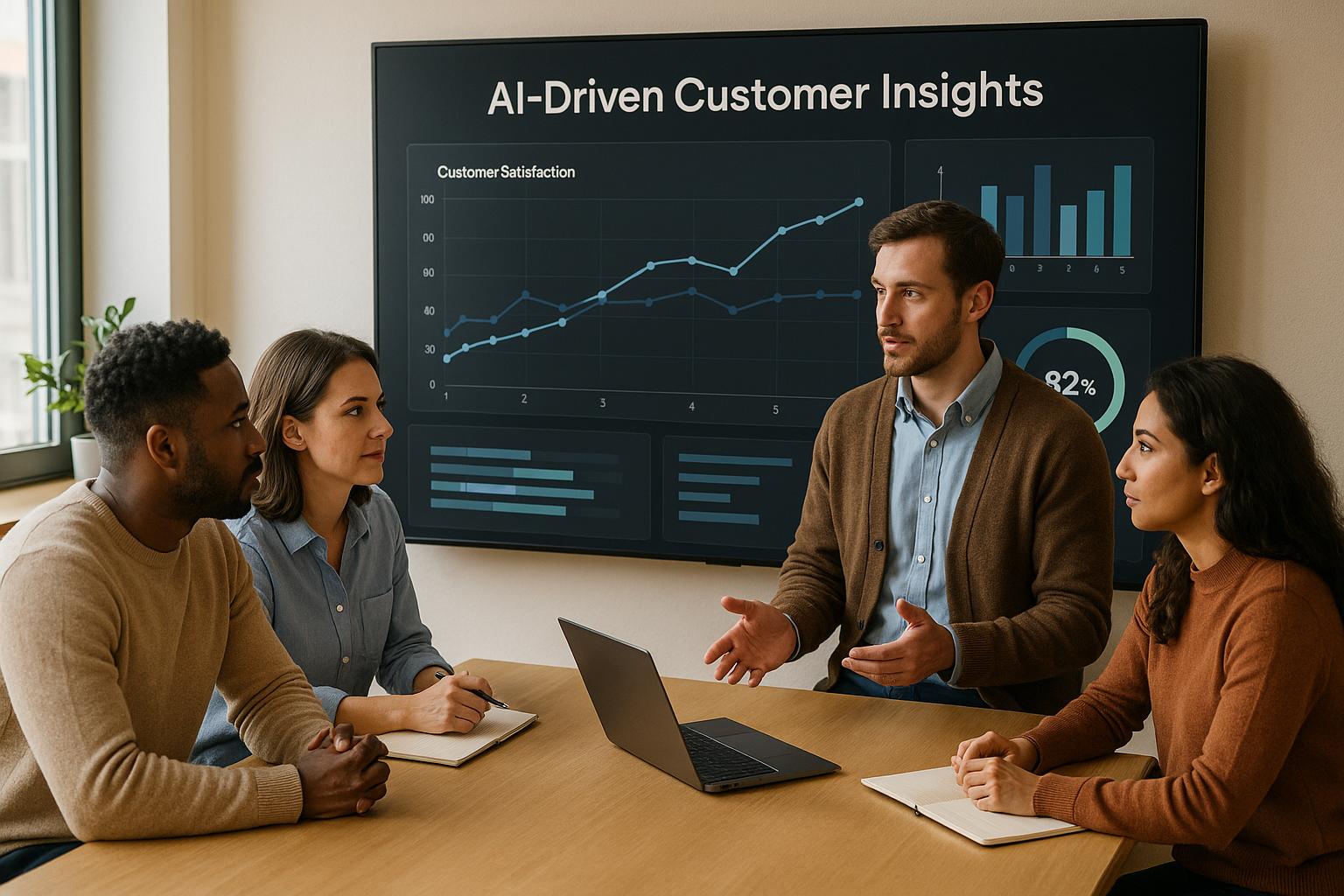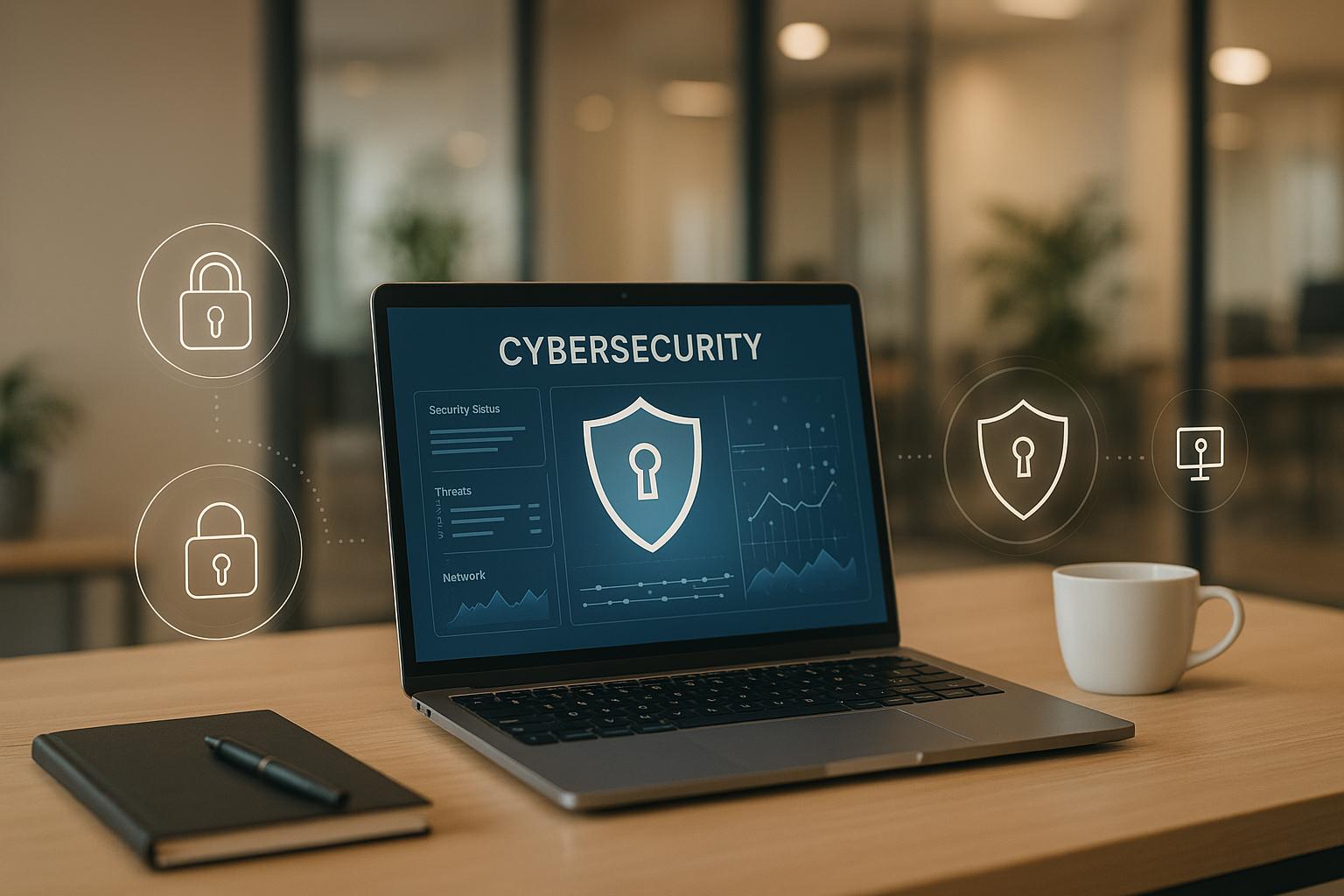Structured crowdsourcing is reshaping how B2B companies innovate. Instead of relying solely on internal teams, businesses are systematically engaging external experts - suppliers, partners, and industry specialists - to generate, evaluate, and implement ideas. This approach addresses common B2B challenges like complex supply chains and rapidly changing markets, leading to faster solutions and reduced costs.
Key Takeaways:
- What It Is: A systematic process for gathering ideas and solutions from external contributors, aligned with specific business goals.
- Why It Matters: Helps overcome narrow thinking, accelerates innovation, and reduces development timelines.
- How It Works: Models include innovation contests, challenge platforms, collaborative idea systems, and hybrid approaches.
- Success Factors: Clear goals, participant motivation, engagement strategies, strong technical platforms, and balanced competition and collaboration.
- Challenges: Coordination, intellectual property concerns, and maintaining long-term engagement.
By combining structured processes, digital platforms, and AI tools, companies can streamline crowdsourcing efforts and achieve impactful results in innovation.
Crowdsourcing, Explained
Frameworks and Models for Structured Crowdsourcing
Achieving success in structured crowdsourcing starts with choosing the right framework. Each model serves a distinct purpose, and selecting the right one helps align the process with your innovation goals. The trick is to match the framework to your objectives and how your organization operates.
Common Models for Crowdsourcing Innovation
Innovation contests are a popular approach, where participants engage in time-limited challenges with clear evaluation criteria. The competitive nature of these contests boosts engagement, and companies typically offer rewards - monetary prizes or public recognition - to motivate participants.
Challenge platforms take a more systematic route by breaking down complex problems into smaller, manageable tasks. Participants can either focus on individual components or collaborate across different challenges. This model is particularly effective for technical problems that require a range of expertise. The platform structure also encourages ongoing communication between participants and problem owners, often resulting in more polished solutions.
Collaborative idea management systems prioritize ongoing innovation rather than one-off events. These systems create communities where participants consistently contribute ideas, provide feedback, and build on each other's work. Instead of fostering competition, this model focuses on collaboration, helping companies develop long-term relationships with their innovation networks.
Hybrid models blend elements from different approaches. For instance, a company might begin with an open collaboration phase where participants brainstorm and share ideas, followed by a competitive phase to evaluate and select the best concepts for implementation. This combination leverages the strengths of both collaboration and competition.
Requirements for Success in B2B Crowdsourcing
Regardless of the model, successful crowdsourcing requires a few key elements: clear goals, strong participant motivation, and effective engagement strategies.
Define clear objectives. Participants need to understand the problem and what success looks like. Vague goals lead to scattered ideas and wasted effort. The best programs outline specific success metrics upfront and make sure participants are aware of them.
Motivate participants beyond money. While financial rewards are helpful, business professionals often value other incentives more - like skill-building opportunities, networking, or recognition. Companies can add value by offering access to exclusive data, collaboration with industry leaders, or visibility within professional networks.
Engagement strategies should fit participants’ schedules. Business professionals often have less flexibility than consumers. Programs need structured timelines, regular updates, and clear expectations to keep participants involved. Facilitating meaningful interactions and maintaining momentum are also critical.
Reliable technical infrastructure is a must. Participants expect secure, easy-to-use platforms that encourage collaboration rather than create hurdles. Integrating these platforms with existing business tools and workflows makes participation smoother and more appealing.
Managing Competition and Collaboration
Balancing competition and collaboration is tricky but essential. Too much competition can discourage knowledge sharing, while pure collaboration may lack the focus needed for results. The best frameworks find a middle ground, creating structured competition within a collaborative setting.
Phased approaches often work well. In the early stages, collaboration is encouraged - participants share knowledge and build on each other's ideas. Later, competitive elements are introduced, pushing participants to refine their concepts and vie for implementation opportunities. This method captures the strengths of both competition and collaboration while avoiding their pitfalls.
Team formation strategies also help balance dynamics. Some programs allow participants to form teams organically, combining complementary skills. Others assign teams to ensure diverse expertise. The choice depends on the challenge's complexity and the level of collaboration desired.
Intellectual property (IP) agreements are critical to encourage participation while safeguarding innovations. Clear terms about ownership, usage rights, and revenue sharing make participants feel secure. Many programs use tiered IP arrangements, where participants retain rights to their core innovations but grant usage rights for specific applications.
Recognition systems should go beyond just rewarding winners. Acknowledging those who facilitate collaboration, provide valuable feedback, or contribute specialized expertise can encourage broader participation. Multi-tier recognition systems highlight various contributions, fostering a sense of inclusion and value.
Ultimately, the most effective B2B crowdsourcing frameworks are adaptable to specific needs while maintaining a solid structure. They provide clear guidance without stifling creativity, balance collaboration with competition, and create mutual value for participants and organizations alike.
The Impact of Structured Crowdsourcing on B2B Innovation
Research shows that structured crowdsourcing can help organizations outperform traditional innovation methods. The key to success lies in identifying critical drivers and using effective metrics to measure progress. These strategies pave the way for measurable benefits, as outlined below.
Key Benefits of Structured Crowdsourcing
Diverse perspectives fuel better solutions. By tapping into external networks, organizations can access a broader range of ideas, often leading to higher-quality innovations than relying solely on internal R&D. Studies reveal that crowdsourced innovations tend to generate more viable concepts simply because more contributors are involved.
Other advantages include faster development cycles through simultaneous exploration of ideas, reduced costs by utilizing external resources, and the ability to spread risks across multiple participants.
Measuring the Impact with Metrics
To fully capture the benefits, companies use a mix of metrics - both quantitative and qualitative - to evaluate progress and showcase value.
- Solution adoption rates measure how many crowdsourced innovations are implemented in real-world applications. Programs that excel in this area often outperform traditional innovation models.
- Time-to-market improvements reflect how quickly organizations can bring new solutions to market. Structured crowdsourcing often shortens development timelines, speeding up delivery.
- Return on investment (ROI) is a key metric for determining program success. Many B2B crowdsourcing initiatives achieve positive ROI relatively quickly, as the value of implemented innovations often outweighs program costs and participant incentives.
- Participation quality metrics assess how engaged contributors are and how satisfied they feel. High engagement tends to result in repeat participation in future initiatives.
- Innovation pipeline strength evaluates how effectively crowdsourcing feeds new ideas into development. This includes tracking the number of concepts generated, the variety of approaches, and the efficiency of idea evaluation.
Factors That Influence Success
Several factors play a pivotal role in the success of structured crowdsourcing initiatives.
Strategic participant selection is crucial. Rather than targeting a broad audience, successful programs focus on recruiting individuals with relevant expertise and complementary skills. This targeted approach leads to higher-quality submissions and better collaboration.
Feedback and iteration are equally important. Programs that provide regular feedback, opportunities for revision, and open communication channels see stronger engagement and improved solution quality.
Organizational readiness determines how well a company can adopt and implement external ideas. Businesses that are prepared to evaluate crowdsourced proposals, integrate them into their workflows, and allocate necessary resources tend to see better results.
Technology platforms also play a key role. Platforms that enable smooth collaboration, offer robust communication tools, and integrate easily with existing systems enhance both participation and outcomes.
Leadership support and cultural alignment are essential for sustaining crowdsourcing efforts. Organizations with strong executive backing and a collaborative culture are more likely to maintain successful programs over time.
Aligned incentive structures ensure that participant motivations match program goals. Effective initiatives offer a mix of rewards - such as financial compensation, professional recognition, and networking opportunities - that appeal to a wide range of contributors.
When executed effectively, structured crowdsourcing can transform B2B innovation. By focusing on these success factors, organizations can overcome challenges and create programs that drive impactful, cost-efficient innovation.
sbb-itb-01010c0
Challenges and Limitations of Structured Crowdsourcing in B2B
Structured crowdsourcing can be a powerful tool for driving innovation in B2B settings, but it’s not without its hurdles. Businesses must address several challenges to ensure these initiatives succeed over the long haul.
Coordination and Scalability Problems
Scaling up a crowdsourcing initiative in a B2B environment is no small feat. Unlike consumer-focused efforts, where individual contributions often operate independently, B2B innovation relies on integrating ideas across interconnected components. This need for alignment makes coordination significantly more complex.
As these programs grow, maintaining quality becomes a major concern. The sheer volume of submissions can overwhelm resources, delaying feedback and fragmenting communication. This lack of cohesion can stifle effective knowledge sharing. To manage this, many organizations use tiered participation models, grouping contributors by expertise and setting up clear workflows for evaluating ideas and providing timely feedback. However, even with such systems in place, legal and intellectual property (IP) issues often add another layer of complexity to project management.
Intellectual Property and Legal Issues
IP concerns are a minefield for B2B crowdsourcing. With multiple contributors working on a single project, determining ownership becomes tricky. The situation is further complicated when sensitive business data is shared across different jurisdictions, each with its own set of laws and regulations.
Legal challenges don't stop there. Differences in employment laws, contract terms, and IP standards across regions can make it difficult to assign liability or enforce agreements. When numerous contributors influence the outcome, managing contracts and resolving disputes requires significant legal expertise. To navigate these issues, businesses often establish detailed IP frameworks. These frameworks define ownership, outline licensing terms, and include mechanisms for resolving disputes. Consulting legal professionals who understand both IP law and the nuances of crowdsourcing is also crucial.
Maintaining Engagement and Long-term Participation
Keeping contributors engaged over the long term is another major challenge. While enthusiasm may be high at the start, it often wanes if participants feel their time and effort aren’t yielding tangible benefits. Regular feedback is essential - contributors want to see how their input is being used. Without this, participation can quickly decline.
Sustained engagement often requires a mix of incentives, including financial rewards, professional recognition, and career development opportunities. However, relying solely on monetary rewards can backfire, as it may not always foster consistent, high-quality contributions. Differences in expertise and varying levels of commitment among participants can also lead to uneven results. Over time, repetitive competition or lack of variety in tasks can contribute to fatigue. Additionally, organizational changes and shifting priorities can disrupt continuity.
To address these issues, some organizations implement layered recognition systems. These systems combine financial incentives with other perks like public acknowledgment, networking opportunities, and career advancement programs. Community-building efforts - such as virtual meetups, mentorship programs, and contributor directories - also play a key role in maintaining long-term participation and enthusiasm.
Applications of Structured Crowdsourcing in B2B Digital Networks
In the world of B2B, structured crowdsourcing is taking on a new form thanks to the rise of digital networks. These networks blend cutting-edge tools, engaged communities, and strategic consulting to supercharge innovation ecosystems. By combining technology with thoughtful planning, businesses can expand their crowdsourcing efforts while keeping quality and focus intact.
Using AI Tools to Improve Crowdsourcing
Artificial intelligence is transforming structured crowdsourcing by tackling many of the logistical hurdles that have traditionally slowed these initiatives down. AI-powered platforms can now assess contributor expertise, match the right people to the right projects, and speed up the process of evaluating ideas.
For example, tools like GTM Brain assist organizations in crafting go-to-market strategies by gathering insights from diverse stakeholders. TAM Analyst aids in collaborative market analysis, bringing together expertise from multiple fields. Meanwhile, the AI Process Optimizer identifies inefficiencies in crowdsourcing workflows and suggests data-driven improvements, cutting down on the manual work required to manage large-scale initiatives. Beyond automation, digital communities play a pivotal role in fostering collective innovation and collaboration.
Building Collaboration Through Digital Communities
Once AI tools streamline processes, digital communities take collaboration to the next level. These communities rely on multi-channel engagement - using platforms like social media, Slack workspaces, and newsletters - to maintain active and meaningful dialogue among participants.
A directory-based system simplifies networking by helping contributors find others with relevant expertise or past experience. This targeted approach reduces the time and effort needed to coordinate and encourages knowledge sharing. Many platforms are also building repositories of insights, methodologies, and best practices, ensuring that every project contributes to a growing pool of resources for future use. Peer review systems, driven by the community, enhance quality control by allowing experienced participants to refine and improve newer contributions, creating a self-sustaining ecosystem of innovation.
Consulting Services for Crowdsourcing Optimization
To tackle the challenges of coordination and scalability, consulting services provide much-needed guidance and support. These services help organizations design, implement, and fine-tune their structured crowdsourcing programs. Typically, the process begins with developing a strategic framework. Consultants work closely with businesses to clarify objectives, identify suitable contributors, and establish governance structures to address issues like intellectual property and coordination.
From there, consultants assist with implementation, including setting up technology platforms, creating onboarding processes for contributors, and establishing feedback loops to ensure continuous improvement. For example, the B2B Ecosystem takes an integrated approach by combining consulting services with advanced AI tools. This strategy allows organizations to create customized crowdsourcing programs tailored to their needs. Additionally, performance optimization consulting analyzes participation trends, identifies barriers to engagement, and adjusts incentive structures to keep programs running smoothly. With ongoing support, businesses can ensure their crowdsourcing efforts remain effective and sustainable over the long term.
Conclusion: How Structured Crowdsourcing Drives B2B Innovation
Structured crowdsourcing is transforming how B2B organizations approach innovation. By implementing clear frameworks, leveraging advanced tools, and maintaining strong management practices, businesses can achieve more consistent and effective results in their innovation efforts.
Digital platforms and collaborative communities play a key role in this process. They not only boost engagement but also facilitate seamless knowledge sharing and expert interactions. This continuous exchange of ideas helps organizations refine their innovation strategies over time, making them more agile and responsive to change.
As more B2B companies adopt structured crowdsourcing, it becomes an integral part of their innovation strategy. Expert input helps simplify operations and address coordination challenges, ensuring sustained participation and momentum. With the right combination of technology, collaboration, and expert guidance, businesses can drive targeted innovation, maintain a competitive edge, and support long-term growth.
FAQs
What are effective ways for B2B companies to engage external contributors in structured crowdsourcing beyond offering financial rewards?
B2B companies can encourage external contributors in structured crowdsourcing by tapping into non-monetary motivators that spark engagement and provide meaningful value. For instance, offering recognition - like publicly acknowledging contributors or highlighting their work - can go a long way in inspiring participation. Providing opportunities for skill-building or granting access to exclusive industry insights can also attract professionals eager to grow and learn. On top of that, fostering a sense of community and collaboration through interactive platforms or forums helps contributors feel connected, appreciated, and more inclined to stay involved.
What are the main intellectual property challenges in B2B structured crowdsourcing, and how can businesses overcome them?
In B2B structured crowdsourcing, intellectual property (IP) issues can become a sticking point, particularly when it comes to determining ownership rights for ideas or innovations that emerge during the process. Disputes are more likely when multiple contributors are involved, and things can get even messier with third-party claims or unclear access rights to the IP. These hurdles not only slow down commercialization but also add layers of legal complexity.
To navigate these challenges, businesses need to lay down clear terms and conditions right from the start. This means explicitly defining ownership rights, creating licensing agreements, and putting confidentiality measures in place to safeguard sensitive information. By addressing these aspects upfront, companies can encourage smoother collaboration and minimize the risk of conflicts later on.
How do AI tools and digital communities improve structured crowdsourcing for B2B innovation?
AI tools simplify the process of structured crowdsourcing in B2B innovation by taking over repetitive tasks, analyzing data to extract useful insights, and aiding in smarter decision-making. They enable businesses to spot trends, validate ideas swiftly, and interact with contributors in a more meaningful way.
At the same time, digital communities play a key role by encouraging real-time collaboration, facilitating knowledge exchange, and collecting valuable feedback. When combined, AI and digital communities accelerate innovation, allowing B2B companies to stay ahead of the curve and scale their growth efficiently.


